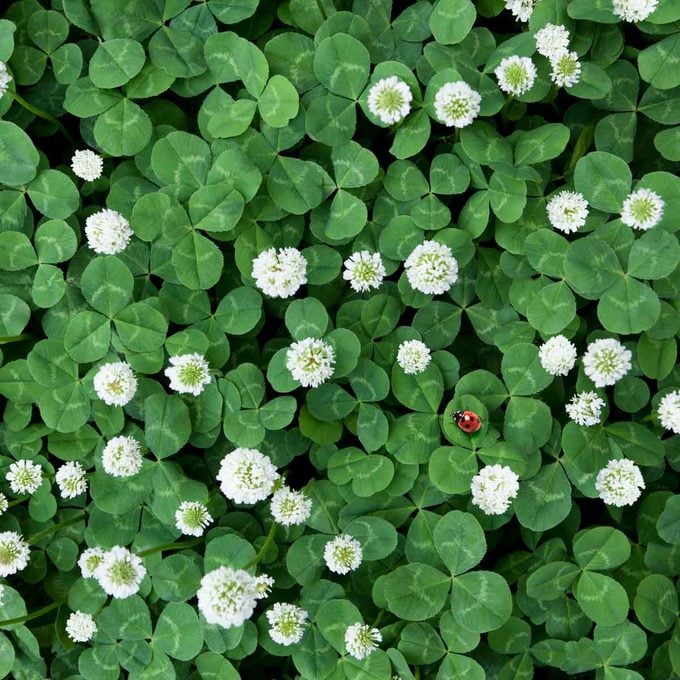Clover grass can be seen as a nuisance or a lawn cover alternative to traditional turf grass. Here's what to know about clover grass.
Clover Grass: Love It or Treat It?

Clover was a popular lawn cover choice until the tides turned in favor of traditional turf grass in the 1950s. However, clover grass has grown in popularity in recent years thanks to its many advantages over traditional grass. Here’s what to know about clover grass.
On This Page
What Is Clover Grass?
Clover is a flowering plant with three small leaves. (Lucky four-leaf clover also exists, but it’s much less common than the three-leaf version.) There are more than 300 different types of clover.
Clover is often viewed as a weed, but it’s actually part of the legume family, along with beans, peas and peanuts. Today, more and more people are purposefully cultivating clover grass lawns that are all clover or a mix of clover and traditional turf grass.
Pros of Clover Grass
-
Requires little watering;
-
Drought-tolerant;
-
Requires little to no mowing, since it only grows two to eight inches tall;
-
Doesn’t require fertilizer since it creates its own nitrogen;
-
Improves the health of soil thanks to its natural fertilizing abilities;
-
Doesn’t require herbicides since its dense root structure leaves little room for weeds to grow;
-
Can grow well in even poor-quality soil;
-
Takes root and establishes itself quickly;
-
Feels soft and cool underfoot;
-
Is inexpensive to plant, with clover seeds costing about $4 per 4,000 sq. ft.;
-
Resists turning brown from pet urine;
-
Resists blight and mildew damage;
-
Attracts bees and other beneficial insects to your yard. (If bees aren’t your thing you can opt to grow micro clover that doesn’t attract bees or mow the clover when it blooms.)
Cons of Clover Grass
-
As a short-lived perennial, may need reseeding every two or three years (especially if your lawn is only composed of clover);
-
More likely to stain clothing than grass;
-
Doesn’t hold up under foot traffic as well as traditional grass;
-
May hurt your home’s resale value since many buyers still favor traditional grass.
How to Build a Clover Lawn
First, choose a variety of clover. Popular choices include low-growing and hardy white clover and pollinator-friendly strawberry clover. You may want to check out the new small-leaf microclover, too, which blends nicely with lawn grasses.
Once you have your seeds, clear out your lawn so the clover has room to establish itself. Begin by mowing your lawn on the lowest setting before using a thatch rake or dethatching machine to thin out the lawn.
The next step is to spread the clover seed. You can do this by hand if you’re seeding a small area. For larger areas, use a broadcast spreader like the Agri-Fab Push Broadcast Spreader.
Your newly seeded lawn will need plenty of water over the next two weeks, so water daily if it doesn’t rain. You can expect to see the first sprouts pop up in about one week.
How to Get Rid of Clover
If you see clover as more of a nuisance than something to be cultivated, there are several steps you can take to rid it from your lawn.
You can pull it out by the roots by hand if there are just a few. For more extensive spread, use a combined herbicide and fertilizer such as Scotts Turf Builder Triple Action. Besides killing the clover, it will help the lawn grow in thick and strong enough to crowd out any future clover growth.




















